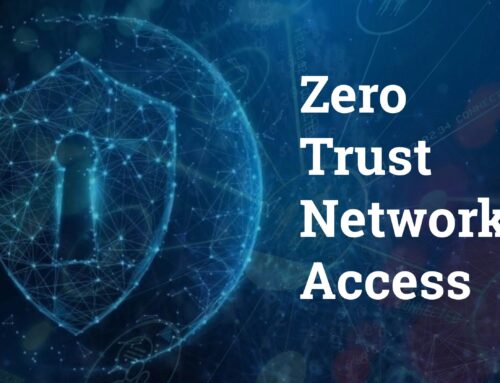
The Role of Threat Intelligence in the Security Operations Center (SOC)
In the ever-evolving landscape of cybersecurity, the integration of threat intelligence Collaboration within the Security Operations Center (SOC) is not just beneficial—it is essential for managing security incidents. As organizations face a myriad of cyber threats, the SOC serves as the nerve center for detection and response. By leveraging threat intelligence, SOC teams can enhance their capabilities to anticipate, identify, and neutralize potential threats proactively. This article delves into the indispensable role of threat intelligence in fortifying SOC operations, ensuring that businesses remain resilient against the sophisticated tactics of threat actors. At Teamwin Global Technologica, we prioritize safeguarding your enterprise, ensuring tomorrow’s success through robust security solutions.
Understanding Threat Intelligence
Threat intelligence Proactive threat hunting is a critical component in the arsenal of a modern SOC. It involves the collection, analysis, and dissemination of information about current and emerging cyber threats. By transforming raw data into actionable intelligence, security teams gain insights into the tactics, techniques, and procedures of threat actors. This intelligence not only aids in immediate threat detection but also informs strategic decision-making. The effective use of threat intelligence empowers SOC analysts to anticipate cyber threats, enabling a more proactive approach to cybersecurity and enhancing the overall security posture of the organization.
Definition of Threat Intelligence
Threat intelligence is defined as evidence-based knowledge about existing or potential cyber threats that can aid in threat detection and response. It encompasses a wide range of data, including indicators of compromise, threat feeds, and intelligence reports that are analyzed to provide a comprehensive understanding of the threat landscape. This form of intelligence is crucial for SOC analysts who must assess and respond to real-time threats swiftly. By integrating threat intelligence into SOC operations, organizations can better protect against the ever-changing tactics of cyber adversaries, ensuring their infrastructure remains secure and resilient.
Types of Threat Intelligence
Threat intelligence is categorized into several types, each serving a specific purpose within the security ecosystem. By utilizing diverse types of threat intelligence, organizations can enhance their SOC capabilities, fortifying defenses against both current and emerging threats. These types include:
- Strategic threat intelligence: Provides high-level insights into the broader threat landscape, aiding executives in making informed security decisions.
- Operational threat intelligence: Focuses on understanding the specific tactics and procedures of known threat actors, essential for proactive threat hunting and incident response.
- Tactical intelligence: Includes indicators of compromise, assisting SOC teams in real-time threat detection.
The Threat Intelligence Lifecycle
The threat intelligence lifecycle is a structured process that ensures the continuous improvement and relevance of intelligence efforts within the SOC. It involves several key stages:
| Stage | Description |
|---|---|
| Identification | Identifying intelligence requirements. |
| Collection and Processing | Collecting and processing threat intel data is crucial for effective security operations. |
| Analysis | Analyzing data to produce actionable threat intelligence is essential for effective security measures. |
| Dissemination | Disseminating intelligence to relevant stakeholders. |
| Feedback | Collecting feedback to refine future efforts. |
This cyclical process allows SOC teams to maintain a dynamic and responsive security posture, effectively addressing the complex and rapidly changing threat landscape. By automating elements of this lifecycle, organizations can streamline threat detection and response, ensuring timely protection against potential threats.
The Role of Threat Intelligence in a Security Operations Center
Integrating Threat Intelligence into SOC Operations
Integrating threat intelligence into SOC operations is a crucial strategy for modern organizations seeking to enhance their cybersecurity defenses. By leveraging actionable intelligence, SOC teams can significantly improve their ability to detect and respond to cyber threats efficiently. This integration involves the seamless assimilation of threat data, threat intelligence feeds, and intelligence reports into the daily activities of a Security Operations Center. Such integration empowers SOC analysts with real-time threat intelligence, enabling them to anticipate potential threats and implement proactive measures. At Teamwin Global Technologica, we are committed to ensuring your infrastructure remains secure by providing robust threat intelligence solutions that seamlessly integrate into your SOC operations.
Enhancing SOC Capabilities through Threat Intelligence
Enhancing SOC capabilities through threat intelligence is a transformative process that fortifies the security posture of an organization. By utilizing a comprehensive threat intelligence program, SOC teams can engage in effective threat hunting and incident response activities. Operational threat intelligence provides deep insights into the tactics and procedures of threat actors, allowing security teams to automate threat detection and streamline their response strategies. This proactive approach ensures that SOC analysts can swiftly neutralize threats before they escalate. At Teamwin Global Technologica, we prioritize safeguarding your enterprise by empowering your SOC with cutting-edge threat intelligence platforms that enhance detection and response capabilities.
Impact on Security Posture
The impact of integrating threat intelligence into SOC operations is profound, leading to a significantly improved security posture for organizations. By continuously sharing threat intelligence and leveraging open-source intelligence, SOC teams can maintain a vigilant stance against the ever-evolving threat landscape. This integration not only bolsters the organization’s defenses against real-time threats but also provides strategic threat intelligence that aids in long-term planning and decision-making. As a result, businesses can anticipate and mitigate cyber risks effectively. At Teamwin Global Technologica, we recognize the paramount importance of protecting your business, and we assure you that our security solutions will fortify your defenses, ensuring peace of mind and safeguarding your enterprise’s future.
Operational Threat Intelligence
Definition and Importance
Operational threat intelligence is a specialized form of cyber threat intelligence that focuses on understanding and analyzing the specific tactics, techniques, and procedures (TTPs) employed by threat actors. It plays a crucial role in the daily operations of the Security Operations Center (SOC) by providing actionable insights that enhance threat detection and response. By delving deeply into the methods used by cyber adversaries, operational threat intelligence allows SOC teams to anticipate potential threats and proactively fortify their defenses. Its importance cannot be overstated, as it empowers SOC analysts to perform threat hunting operations with precision, thereby ensuring a robust security posture for the organization.
Automation in Operational Threat Intelligence
Automation in operational threat intelligence is transforming the way SOCs operate by streamlining the process of threat detection and response. With the integration of advanced threat intelligence platforms, organizations can automate the collection and analysis of threat data, making it possible to identify real-time threats swiftly. Automation reduces the burden on SOC analysts, allowing them to focus on high-priority incidents and strategic threat intelligence. By leveraging automation, organizations can enhance their SOC capabilities, ensuring that threat intelligence feeds are efficiently processed and disseminated. This not only improves operational efficiency but also bolsters the organization’s ability to neutralize threats before they escalate, safeguarding its infrastructure against potential threats.
Case Studies of Effective Operational Threat Intelligence
Numerous case studies highlight the effectiveness of operational threat intelligence in enhancing security operations against active threats. For instance, a leading financial institution integrated operational threat intelligence into its SOC operations, resulting in a significant reduction in response times to cyber threats. By utilizing threat intelligence feeds and automation, the institution was able to proactively detect indicators of compromise and swiftly initiate actionable threat incident response measures. Another example is a multinational corporation that leveraged threat intelligence to enhance its threat hunting capabilities, leading to the identification and mitigation of sophisticated cyber threats before they could impact the business. These case studies underscore the vital role of operational threat intelligence in fortifying the defenses of modern SOCs and ensuring the resilience of organizations in the face of an evolving threat landscape.
The SOC Team and Threat Intelligence
Roles of SOC Analysts
Within the Security Operations Center (SOC), SOC Analysts play a pivotal role in reinforcing the organization’s cybersecurity infrastructure. These professionals are primarily focused on threat detection, incident response, and the protection of both endpoints and networks. By leveraging their expertise in cyber threat intelligence, SOC Analysts are adept at identifying potential threats and developing strategies to mitigate them. Their role extends to executing threat hunting operations, where they meticulously analyze threat data to uncover hidden cyber threats. The integration of threat intelligence into their daily operations is crucial, as it empowers them with real-time insights necessary for maintaining a robust security posture.
Collaboration Between Security Team and SOC Analysts
Effective collaboration between the security team and SOC Analysts is essential for optimizing the security operations of any organization. Together, they form a cohesive unit that leverages both strategic and operational threat intelligence to anticipate and respond to cyber threats. By sharing threat intelligence and coordinating their efforts, these teams can enhance detection and response capabilities, resulting in a proactive threat management strategy. This synergy ensures that the organization can swiftly neutralize potential threats, thereby protecting its infrastructure from the evolving threat landscape. At Teamwin Global Technologica, we emphasize the importance of teamwork in ensuring your enterprise’s security and resilience against sophisticated threats.
Building a Threat Intelligence Program within the SOC
Establishing a robust threat intelligence program within the SOC is a strategic initiative that enhances the organization’s ability to combat cyber threats. This program involves the systematic integration of threat intelligence feeds, intelligence reports, and automation tools into the SOC’s operations. By utilizing these resources, SOC teams can develop actionable intelligence that informs their threat detection and response efforts. The program also includes training SOC analysts to effectively leverage threat intelligence platforms, ensuring they remain adept at responding to the dynamic threat landscape. At Teamwin Global Technologica, we are committed to empowering your SOC with cutting-edge solutions to safeguard your enterprise against potential threats.
Modern SOC Challenges and Solutions
Addressing Cyber Threats with Threat Intelligence
In the face of modern cyber threats, the integration of threat intelligence into the SOC is indispensable. Threat intelligence provides the SOC team with a comprehensive view of the threat landscape, enabling them to anticipate and neutralize potential threats. By leveraging real-time threat intelligence and open-source intelligence, organizations can enhance their threat detection and response capabilities, ensuring a proactive stance against cyber adversaries. This approach not only improves the organization’s security posture but also fosters a culture of vigilance and resilience. At Teamwin Global Technologica, we prioritize safeguarding your enterprise by equipping your SOC with the tools and knowledge necessary to effectively address cyber threats.
Managed SOC Services and Threat Intelligence
Managed SOC services, such as those offered by Teamwin, provide organizations with expert security operations that integrate advanced threat intelligence. These services deliver a comprehensive suite of threat detection and response solutions, tailored to meet the unique needs of each client. By outsourcing their security operations to a managed SOC, organizations can benefit from the expertise of seasoned security analysts and cutting-edge threat intelligence platforms. This partnership ensures continuous monitoring and swift incident response, thereby fortifying the organization against potential threats. With Teamwin’s managed services, you can rest assured that your enterprise’s security is in capable hands, allowing you to focus on your core business objectives.
Future Trends in SOC and Threat Intelligence
As the cybersecurity landscape continues to evolve, several future trends in SOC and threat intelligence are emerging. The increasing automation of threat detection processes is set to revolutionize SOC operations, enabling faster and more accurate responses to cyber threats. Additionally, the integration of threat intelligence in modern security practices is vital for effective incident management. artificial intelligence and machine learning into threat intelligence platforms is expected to enhance the predictive capabilities of SOC teams. This will allow them to anticipate and neutralize threats with greater precision. Furthermore, the growing emphasis on collaboration and information sharing among security teams will drive the development of more robust threat intelligence programs. At Teamwin Global Technologica, we are dedicated to staying ahead of these trends, ensuring that your organization remains secure and resilient in the face of an ever-changing threat landscape.
5 Surprising Facts About the Role of Threat Intelligence in Modern SOC Operations
- Threat intelligence can reduce incident response times by up to 50%, allowing Security Operations Centers (SOCs) to respond to threats more swiftly.
- Over 70% of organizations report that threat intelligence sharing improves their overall security posture and helps in identifying emerging threats.
- Many SOCs leverage AI and machine learning to enhance threat intelligence, enabling them to predict and identify threats before they manifest.
- Effective threat intelligence can lead to a 30% reduction in false positives, allowing SOC teams to focus on genuine threats instead of sifting through numerous alerts.
- Integration of threat intelligence into SOC operations can enhance collaboration among teams, leading to faster remediation and a more unified defense strategy.
What is the role of threat intelligence in modern SOC operations?
The role of threat intelligence in modern SOC operations is crucial as it provides the necessary information to identify, evaluate, and respond to cyber threats. By integrating threat intelligence into your SOC, security teams can enhance their ability to detect and mitigate threats effectively, allowing for a more proactive security posture.
How does threat intelligence help improve threat detection?
Threat intelligence helps improve threat detection by providing context around potential threats, including indicators of compromise and tactics used by adversaries. This information enables SOC analysts to focus their efforts on the most relevant threats, thereby enhancing the effectiveness of SOC operations.
What are the benefits of threat intelligence for security operations centers?
The benefits of threat intelligence for security operations centers include improved situational awareness, faster incident response times, and the ability to anticipate and mitigate threats before they impact the organization. A well-structured threat intelligence program can significantly enhance the resilience of the SOC.
What types of threat intelligence should SOC teams focus on?
SOC teams should focus on various types of threat intelligence, including tactical threat intelligence, operational threat intelligence, and strategic threat intelligence. Each type provides different insights that can assist in improving overall security operations and decision-making processes.
How can I integrate threat intelligence into my SOC?
Integrating threat intelligence into your SOC involves utilizing threat intelligence tools, feeds, and reports that align with your security objectives. This integration allows your SOC to leverage the latest threat intelligence data to inform incident response and enhance overall security capabilities.
What challenges do SOC analysts face when using threat intelligence?
SOC analysts face several challenges when using threat intelligence, including information overload and the need to sift through vast amounts of data to find actionable insights. Additionally, ensuring that the threat intelligence is timely and relevant can be a challenge in the ever-evolving cyber threat landscape.
How does commercial threat intelligence differ from other intelligence sources?
Commercial threat intelligence typically offers more refined and specific insights compared to open-source intelligence. It often includes proprietary data and analyses that can enhance the security posture of an organization, allowing SOC teams to respond to sophisticated threats more effectively.
In what ways does threat intelligence enable a resilient SOC?
Threat intelligence enables a resilient SOC by providing actionable insights that inform threat detection and response strategies. By utilizing robust threat intelligence, SOC teams can adapt to emerging threats and maintain operational effectiveness, ensuring they are prepared for potential cyber incidents.
Why isn’t threat intelligence sufficient on its own for SOC operations?
While threat intelligence is a vital component of SOC operations, it isn’t sufficient on its own. Effective security operations require a combination of technologies, processes, and skilled personnel to interpret and act on threat intelligence, ensuring that the SOC can respond to incidents in a timely and effective manner.






